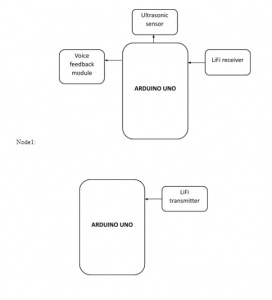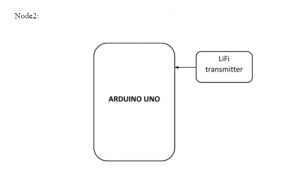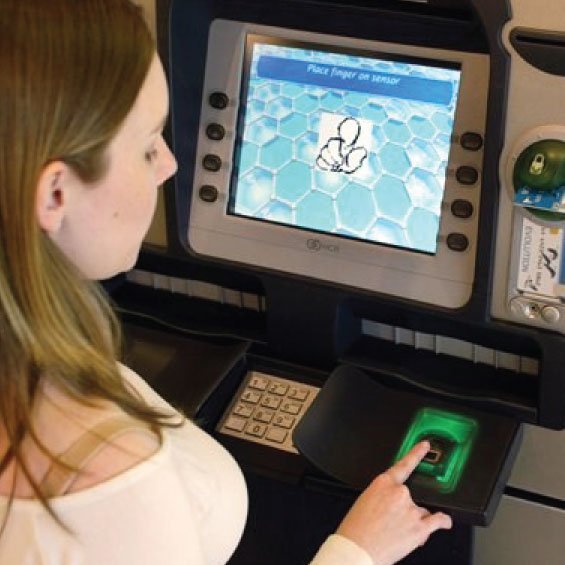Description
LiFi indoor navigation using Arduino
Introduction:
The Li-Fi technology can transfer the data through LEDs. It is a high-speed and low-cost wireless communication system, compared to Wi-Fi. It can provide high security, large bandwidth, and low cost. Li-Fi uses common household LED (light-emitting diodes) light bulbs to enable data transfer, boasting speeds of up to 224 gigabits per second. Light Fidelity (Li-Fi) is a bidirectional, high-speed, and fully networked wireless communication technology similar to Wi-Fi. The term was coined by Harald Haas and is a form of visible light communication and a subset of optical wireless communications (OWC) and could be a complement to RF communication (Wi-Fi or Cellular network), or even a replacement in contexts of data broadcasting. Li-Fi can be considered better than Wi-Fi because there are some limitations to Wi-Fi. Wi-Fi uses 2.4 – 5 GHz radio frequencies to deliver wireless internet access and its bandwidth is limited to 50-100 Mbps. This technology has been proposed as a solution to the RF bandwidth limitations. Indoor navigation is convenient for everyone and it is especially indispensable for the visually impaired. Li-Fi makes use of a free, unlicensed spectrum and is not affected by RF noise. Moreover, most indoor locations would have a sufficient amount of light sources and provide additional security since Li-Fi cannot penetrate through walls. LiFi indoor navigation using Arduino
Existing System:
- Braille display
- Uses only simulation Platform
Proposed System:
High brightness LED acts as a communication source. The transmitter unit is fitted to the wall/ceiling. In the transmitter, the modulated information is transmitted through the LED. Silicon photodiode serves as a receiving element. The receiver unit demodulates the encoded binary data and gives the response in the form of voice to the person. The receiver unit consists of a phototransistor that receives the information from the LED connected to the transmitter. The information consists of location, and whenever the receiver module comes in the range of that transmitter area then the corresponding location message is sent to the receiver is stored in the voice module, and processed further to initiate voice to guide the person.
Advantages:
- Audio output
- Efficient for blind peoples
Block Diagram:
Stick Section:
Node1:

Node2:

LiFi indoor navigation using Arduino
Hardware:
- Arduino UNO
- RF TX & RX
- Voice feedback module
Software:
- Arduino IDE
- Embedded C
Applications:
- Industrial applications
- Blind Persons
Reference :
- X. Xu, Y. Tang, and S. Li, “Indoor localization based on hybrid Wi-Fi hotspots,” 2017 International Conference on Indoor Positioning and Indoor Navigation (IPIN), Sep. 2017.
- H. Anandakumar and K. Umamaheswari, “Supervised machine learning techniques in cognitive radio networks during cooperative spectrum handovers,” Cluster Computing, vol. 20, no. 2, pp. 1505–1515, Mar. 2017.
- S. Fudickar and M. Valentin, “Most accurate algorithms for RSS-based Wi-Fi indoor localization,” 2014 International Conference on Indoor Positioning and Indoor Navigation (IPIN), Oct. 2014.
- Roshini and H. Anandakumar, “Hierarchical cost-effective leach for heterogeneous wireless sensor networks,” 2015 International Conference on Advanced Computing and Communication Systems, Jan. 2015.
- H. Anandakumar and K. Umamaheswari, “An Efficient Optimized Handover in Cognitive Radio Networks using Cooperative Spectrum Sensing,” Intelligent Automation & Soft Computing, pp. 1–8, Sep. 2017.
- M. Suganya and H. Anandakumar, “Handover based spectrum allocation in cognitive radio networks,” 2013 International Conference on Green Computing, Communication and Conservation of Energy (ICGCE), Dec. 2013.



































































































































































































































































































































































































































































































































































































































































































































































































































































































































































































































































Customer Reviews
There are no reviews yet.